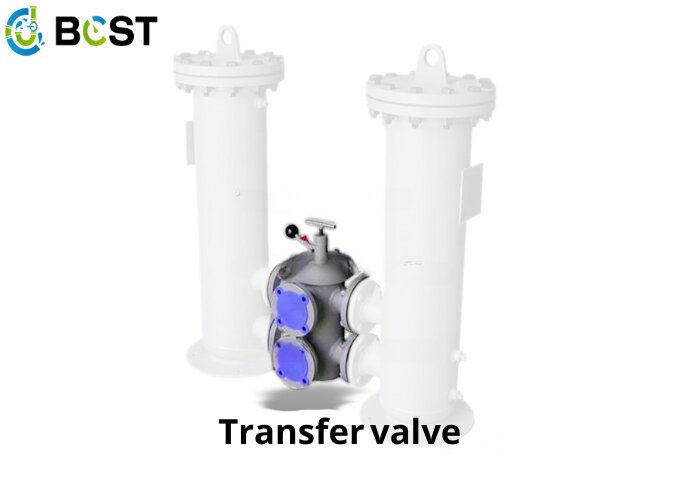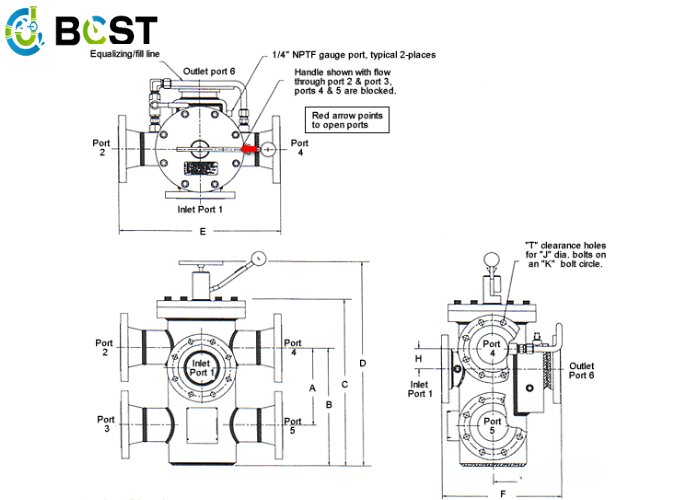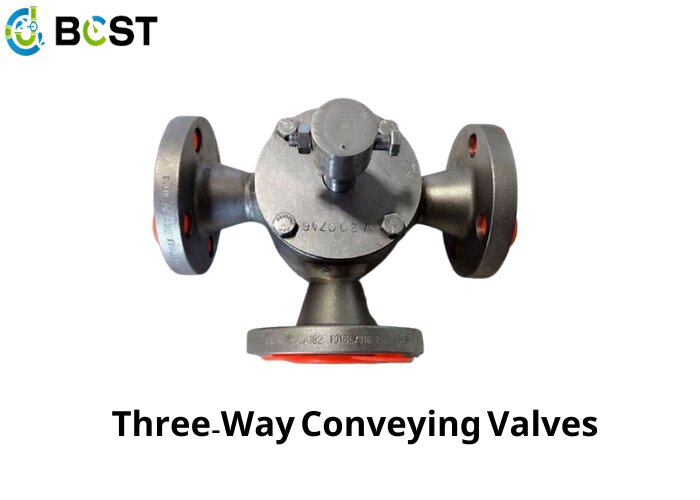
Transfer valves are also known as Diverter valves. Transfer valves are typically used in complex piping systems where fluid needs to be distributed to multiple destinations, or in applications where multiple fluid streams need to be combined into one or separated into different streams.

Conveying valves are mechanical components used to control the flow of liquids, gases, or other fluids in a piping system. They are usually used in industrial processes such as chemical processing, oil and gas production, water treatment power generation, etc. The basic function of a conveyor valve is to regulate the flow of fluid between two or more pipelines or to allow fluid to be transported from one pipeline to another. Conveying valves can be manual, automatic, or a combination of both, and are designed to meet the specific requirements of each application.
In addition to controlling fluid flow, conveyor valves can be used to isolate and vent sections of piping systems, prevent back flow, and protect against over pressurization and other safety hazards.
Overall, conveyor valves play a key role in the control and management of fluid flow in industrial processes and are an important part of any piping system.

Three-Way Conveying Valves
A three-way transfer valve is a type of valve that allows fluid to be transferred from one pipeline to two others. It typically has three ports and two switching positions, which allow fluid to be directed from one port to another, or shut off completely.
Three-way transfer valves are typically used in piping systems where fluid needs to be distributed to multiple destinations, or in applications where two separate fluid streams need to be combined into one.
Three-way transfer valves can be manual, automatic, or a combination of both. They can also be designed in different materials depending on the fluid being transported, temperature and pressure requirements, and the need for corrosion resistance.
In addition to controlling fluid flow, three-way valves can be used to isolate and vent sections of piping systems, prevent back flow, and protect against over pressurization and other safety hazards.
The following figure shows the outline of a three-way conveying valve

Six-Way Conveying Valves
A six-way transfer valve is a valve that allows fluid to be transferred from one pipe to five others and vice versa. It typically has six ports and multiple switching positions, which allows fluid to be directed from one port to another, or shut off completely.
Six-way delivery valves are typically used in complex piping systems where fluid needs to be distributed to multiple destinations, or in applications where multiple fluid streams need to be combined into one or separated into different streams.
The configuration of a six-way delivery valve can vary depending on the specific requirements of the application. Some six-way delivery valves are designed with a hexagonal body, while others have more complex geometries with multiple ports and switching positions.
Six-way delivery valves can be manual, automatic, or a combination of both. They can also be designed in different materials depending on the fluid being transported, temperature and pressure requirements, and the need for corrosion resistance.
In addition to controlling fluid flow, six-way delivery valves can be used to isolate and vent sections of piping systems, prevent back flow, and protect against over pressurization and other safety hazards.
The following figure shows a cutaway view of a six-way delivery valve






